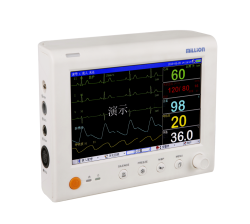Wechat QR code

TEL:400-654-1200

TEL:400-654-1200

Importance of ambulatory blood pressure monitoring
Ambulatory blood pressure (ABP) is the measurement of a person's blood pressure within 24 hours of a day and night, at intervals of a certain period of time. Ambulatory blood pressure monitoring is not only used for the diagnosis and evaluation of hypertension, but also for the diagnosis of white coat hypertension, the detection of hidden hypertension, the examination of the causes of intractable and refractory hypertension, and the assessment of the degree of blood pressure rise, short-term variability and circadian rhythm. For hypertensive patients, regular measurement of ambulatory blood pressure is of great significance to the management of hypertension.Meilun
The ambulatory blood pressure recorder is composed of transducer, miniature recorder and recovery system. The cuff can be inflated regularly, the blood pressure of brachial artery can be measured, and the data can be stored automatically. More than 200 blood pressure values can be stored in a day at most, and then the blood pressure can be printed by the whole recovery system analysis.Meilun

The ideal blood pressure control should include blood pressure and ambulatory blood pressure monitoring in the whole 24 hours, because there is no "white coat hypertension" and placebo reaction, which can correctly evaluate the rest and activity state, circadian rhythm and the duration of drug action in the course of treatment. According to the peak and trough time of blood pressure, antihypertensive drugs with different effects can be selected for more effective. Control blood pressure and reduce adverse drug reactions. Many hemodynamic indicators, including systolic blood pressure, diastolic blood pressure and heart rate, as well as cardiovascular events such as myocardial infarction, sudden cardiac death and stroke, have obvious and similar diurnal variations. For example, in the early morning, many indicators of the former begin to rise rapidly and approach the peak value, while the incidence of accidents of the latter is the highest in one day. It seems that there is a relationship between them. Mediated by neurohumoral factors or blood coagulation system, it requires that any antihypertensive drug used clinically should provide all-day antihypertensive protection, especially in the morning, rather than reducing the occasional blood pressure at a certain time or the average ambulatory blood pressure within 24 hours.
In a word, with the application of ambulatory blood pressure measurement, people have improved their understanding of the variability of blood pressure, the influence of environmental stimulus on blood pressure, the difference between high-risk and low-risk patients in clinics with similar blood pressure values, and the observation of antihypertensive effect, which provides a new way for the clinical and epidemiological study of hypertension.
Therefore, ambulatory blood pressure monitoring is recommended as an important part of the 2010 guidelines for hypertension prevention and treatment, which can better and more truly evaluate the blood pressure level of patients, and is more conducive to guiding doctors to formulate reasonable drug treatment measures.